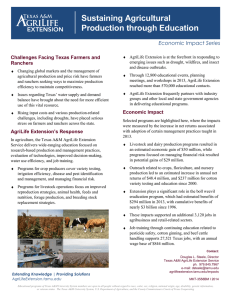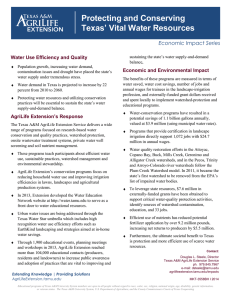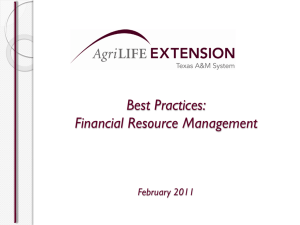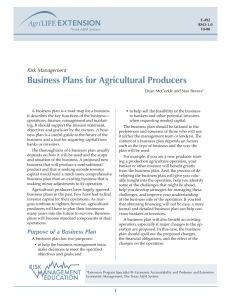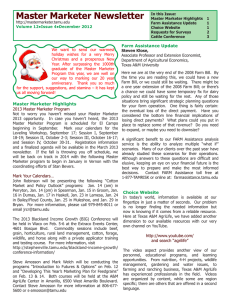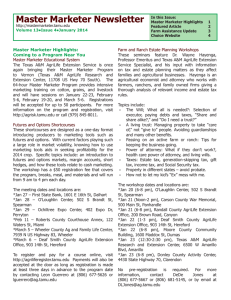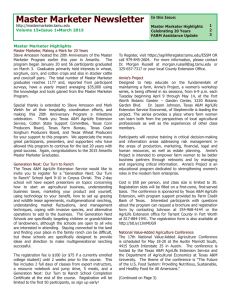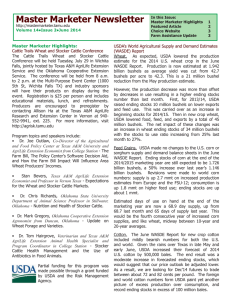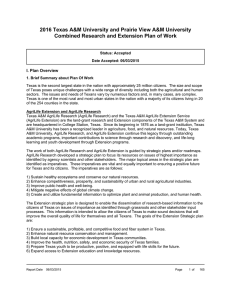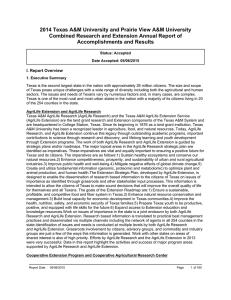Challenges Affecting Natural Resources and the Environment
advertisement
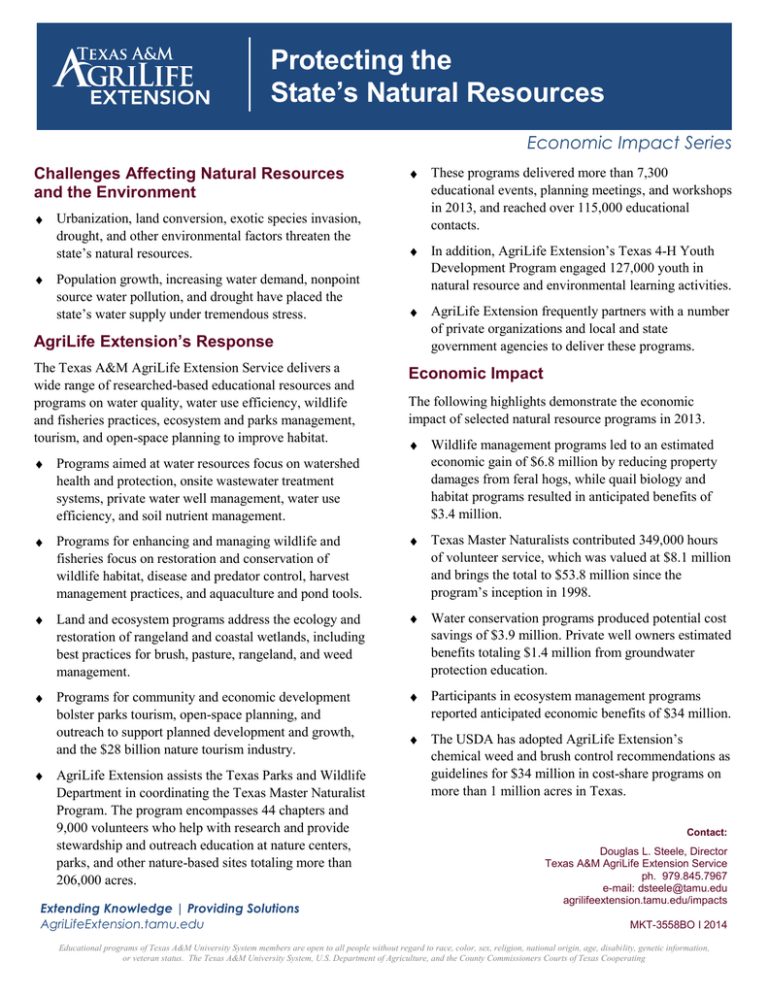
Protecting the State’s Natural Resources Economic Impact Series Challenges Affecting Natural Resources and the Environment Urbanization, land conversion, exotic species invasion, drought, and other environmental factors threaten the state’s natural resources. Population growth, increasing water demand, nonpoint source water pollution, and drought have placed the state’s water supply under tremendous stress. AgriLife Extension’s Response The Texas A&M AgriLife Extension Service delivers a wide range of researched-based educational resources and programs on water quality, water use efficiency, wildlife and fisheries practices, ecosystem and parks management, tourism, and open-space planning to improve habitat. These programs delivered more than 7,300 educational events, planning meetings, and workshops in 2013, and reached over 115,000 educational contacts. In addition, AgriLife Extension’s Texas 4-H Youth Development Program engaged 127,000 youth in natural resource and environmental learning activities. AgriLife Extension frequently partners with a number of private organizations and local and state government agencies to deliver these programs. Economic Impact The following highlights demonstrate the economic impact of selected natural resource programs in 2013. Programs aimed at water resources focus on watershed health and protection, onsite wastewater treatment systems, private water well management, water use efficiency, and soil nutrient management. Wildlife management programs led to an estimated economic gain of $6.8 million by reducing property damages from feral hogs, while quail biology and habitat programs resulted in anticipated benefits of $3.4 million. Programs for enhancing and managing wildlife and fisheries focus on restoration and conservation of wildlife habitat, disease and predator control, harvest management practices, and aquaculture and pond tools. Texas Master Naturalists contributed 349,000 hours of volunteer service, which was valued at $8.1 million and brings the total to $53.8 million since the program’s inception in 1998. Land and ecosystem programs address the ecology and restoration of rangeland and coastal wetlands, including best practices for brush, pasture, rangeland, and weed management. Water conservation programs produced potential cost savings of $3.9 million. Private well owners estimated benefits totaling $1.4 million from groundwater protection education. Programs for community and economic development bolster parks tourism, open-space planning, and outreach to support planned development and growth, and the $28 billion nature tourism industry. Participants in ecosystem management programs reported anticipated economic benefits of $34 million. AgriLife Extension assists the Texas Parks and Wildlife Department in coordinating the Texas Master Naturalist Program. The program encompasses 44 chapters and 9,000 volunteers who help with research and provide stewardship and outreach education at nature centers, parks, and other nature-based sites totaling more than 206,000 acres. Extending Knowledge | Providing Solutions AgriLifeExtension.tamu.edu The USDA has adopted AgriLife Extension’s chemical weed and brush control recommendations as guidelines for $34 million in cost-share programs on more than 1 million acres in Texas. Contact: Douglas L. Steele, Director Texas A&M AgriLife Extension Service ph. 979.845.7967 e-mail: dsteele@tamu.edu agrilifeextension.tamu.edu/impacts MKT-3558BO I 2014 Educational programs of Texas A&M University System members are open to all people without regard to race, color, sex, religion, national origin, age, disability, genetic information, or veteran status. The Texas A&M University System, U.S. Department of Agriculture, and the County Commissioners Courts of Texas Cooperating
